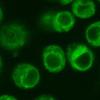Cell-based assays
. 2023. “Tick hemocytes have pleiotropic roles in microbial infection and arthropod fitness.” bioRxiv, Pp. 2023.08.31.555785. Publisher's VersionAbstract
2023
Feb
24
2023
Feb
17
. 8/12/2022. “NURF301 contributes to gypsy chromatin insulator-mediated nuclear organization.” Nucleic Acids Res, 50, 14, Pp. 7906-7924.Abstract
. 2022. “A genome-wide CRISPR screen identifies DPM1 as a modifier of DPAGT1 deficiency and ER stress.” PLoS Genet, 18, 9, Pp. e1010430.Abstract
. 2022. “CRISPR screens in Drosophila cells identify Vsg as a Tc toxin receptor.” Nature, 610, 7931, Pp. 349-355.Abstract
. 2022. “Identification of two pathways mediating protein targeting from ER to lipid droplets.” Nature Cell Biol. Publisher's VersionAbstract
So you want to do a CRISPR pooled screen in insect cells? You can! Here's how
Read the DRSC/TRiP Report to the Fly Board 2022
. 11/24/2021. “Bioinformatic and cell-based tools for pooled CRISPR knockout screening in mosquitos.” Nat Commun, 12, 1, Pp. 6825.Abstract


